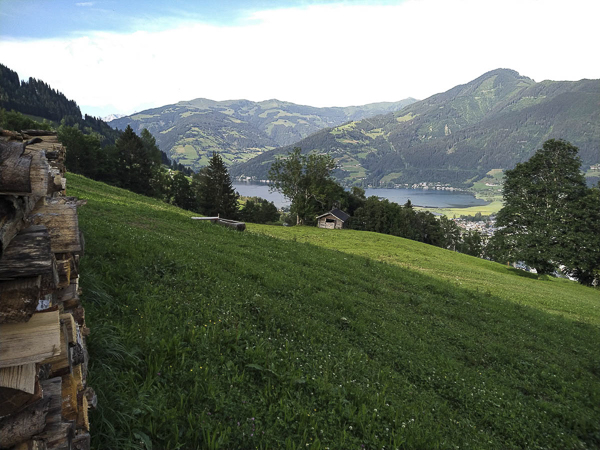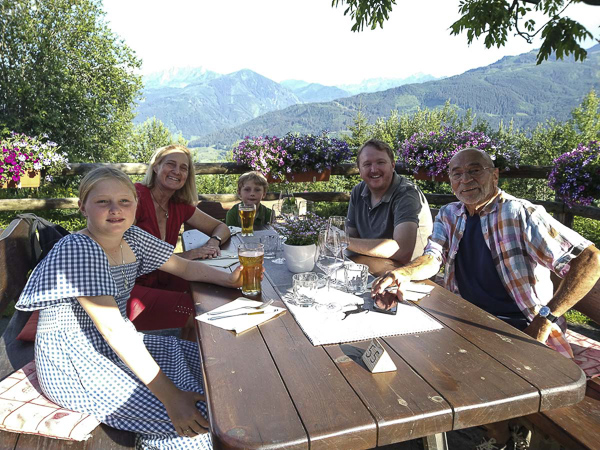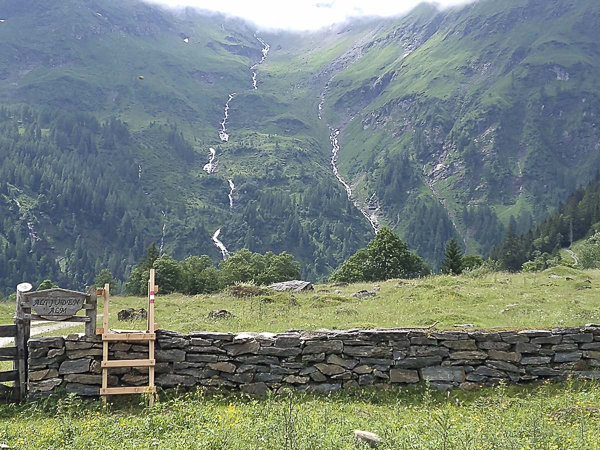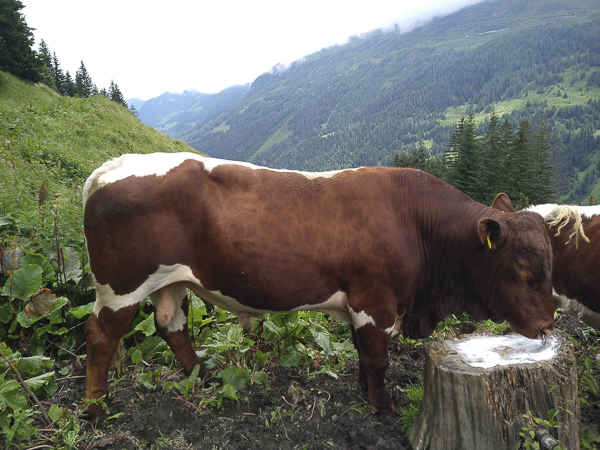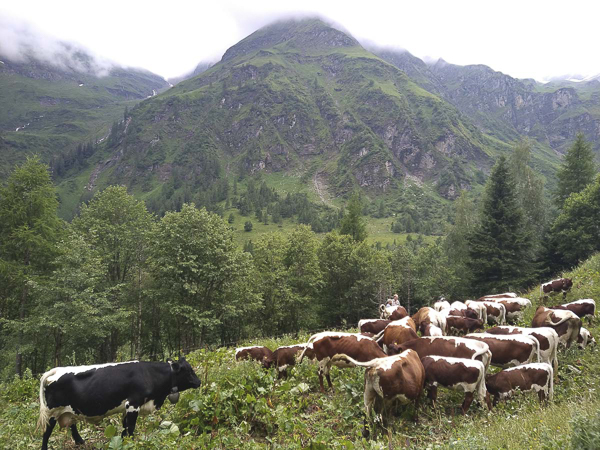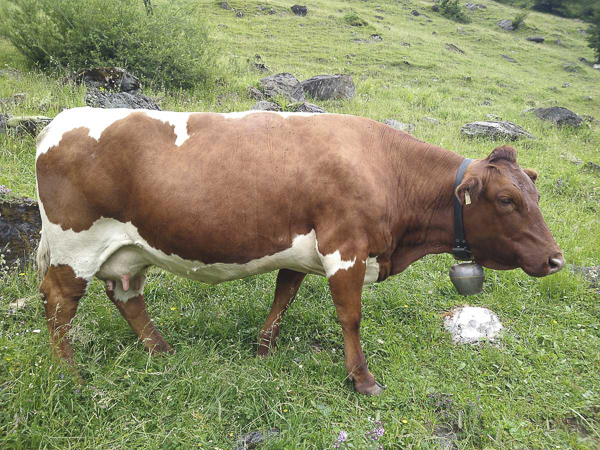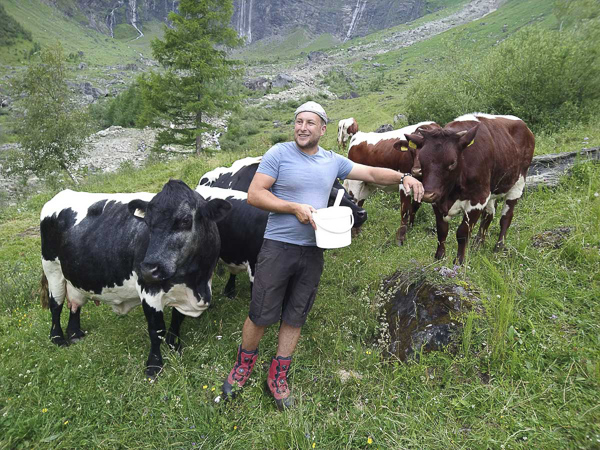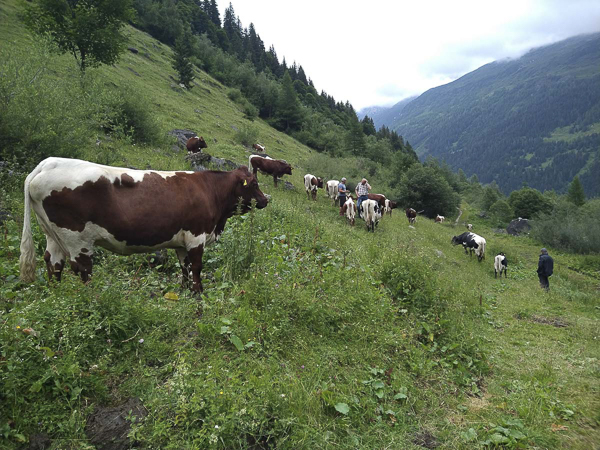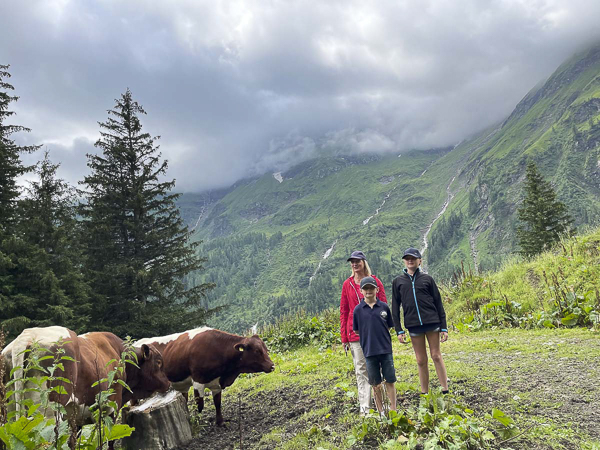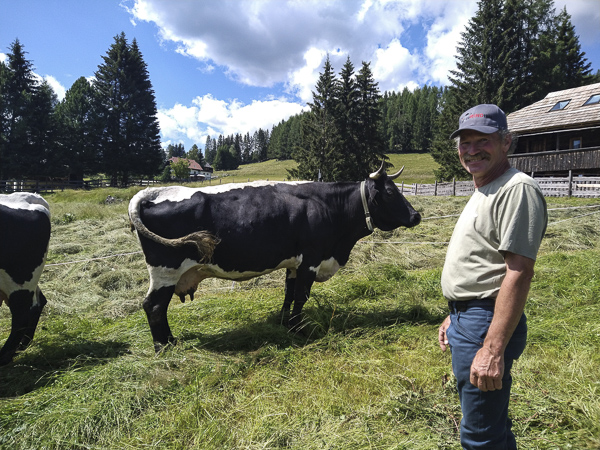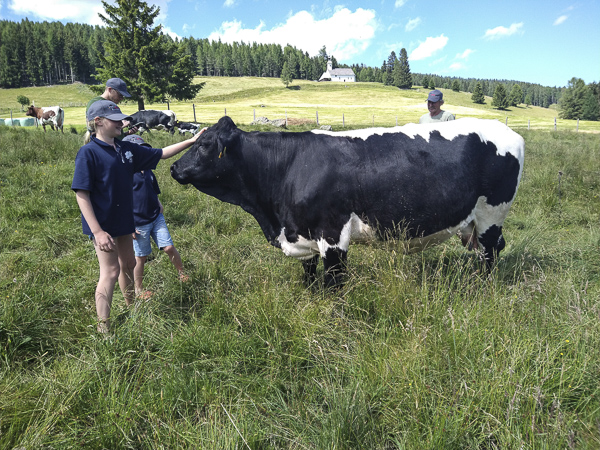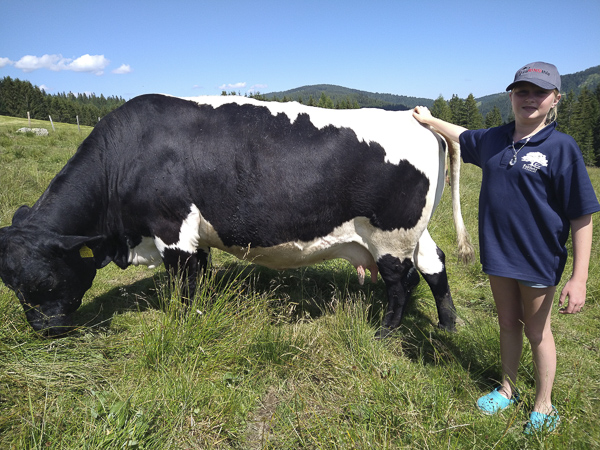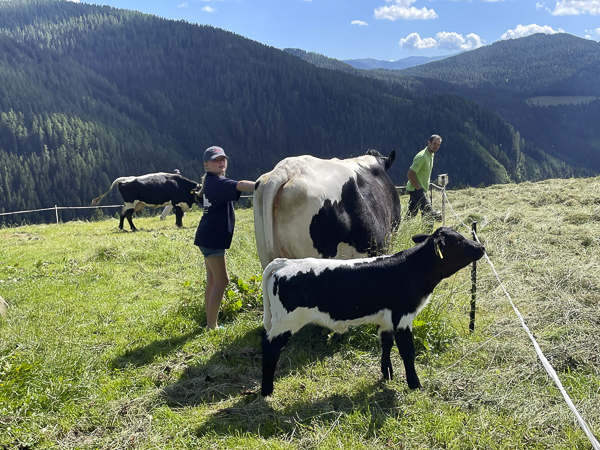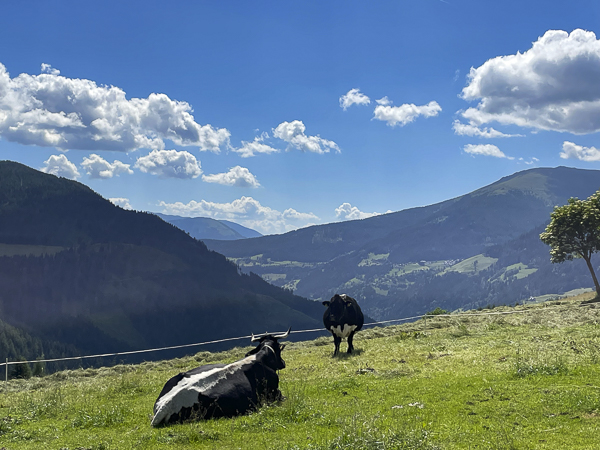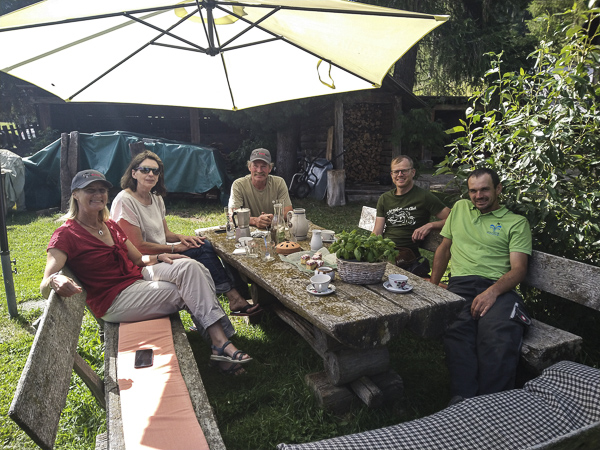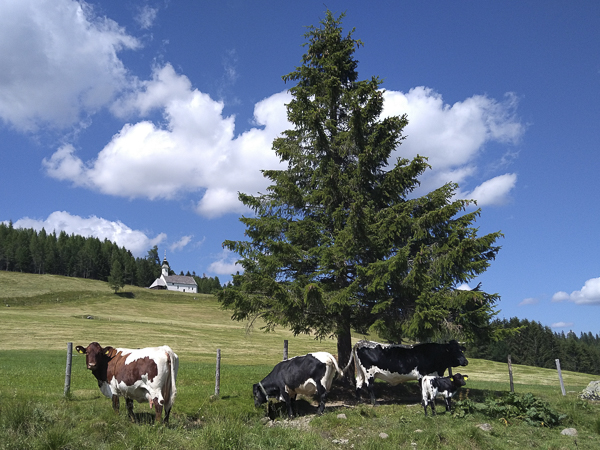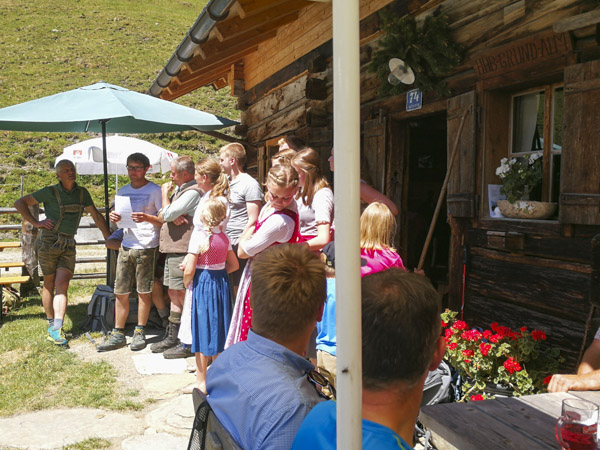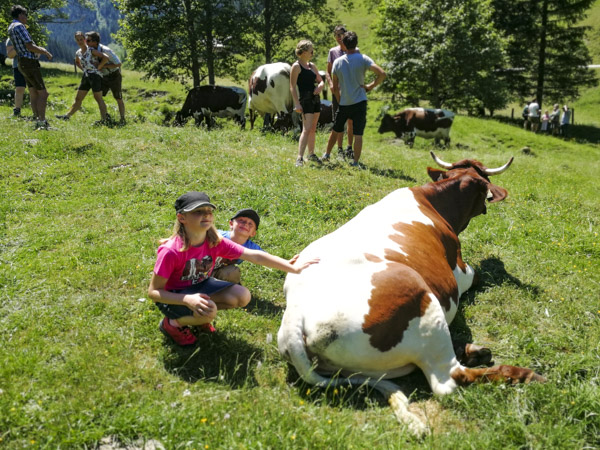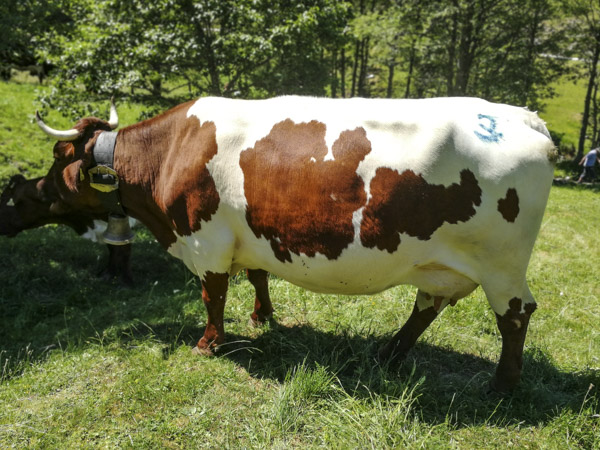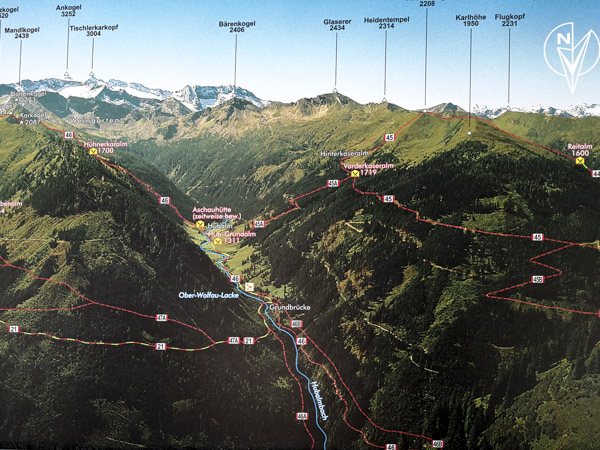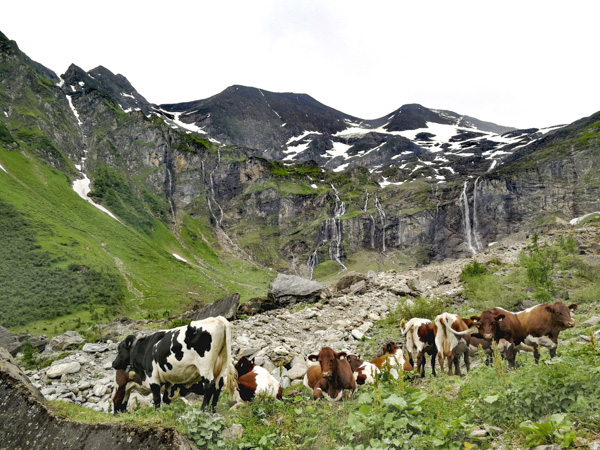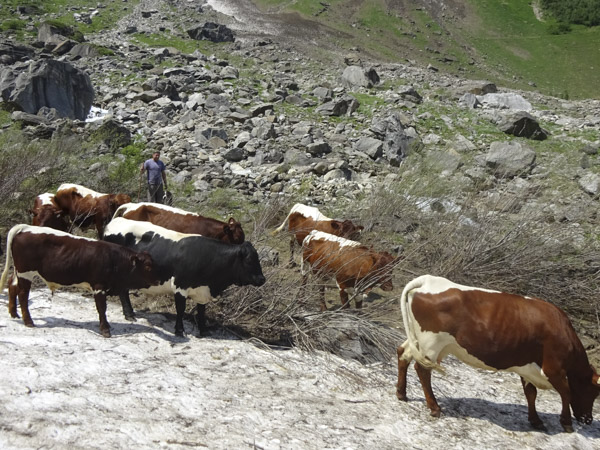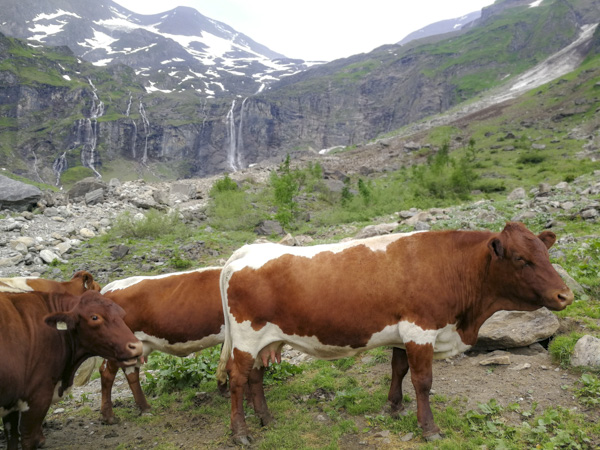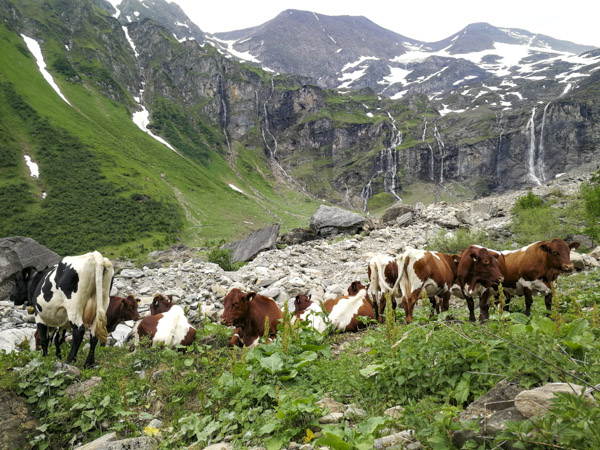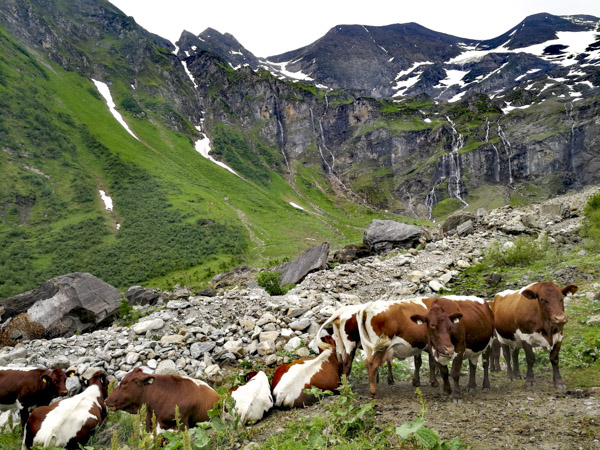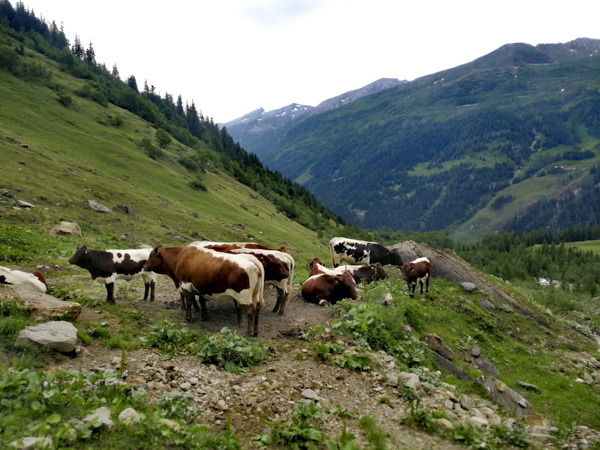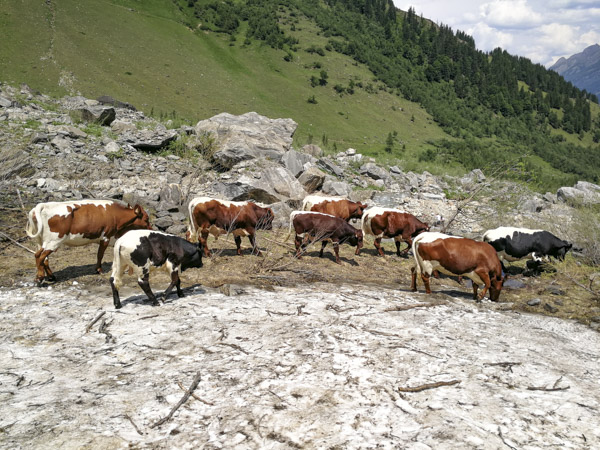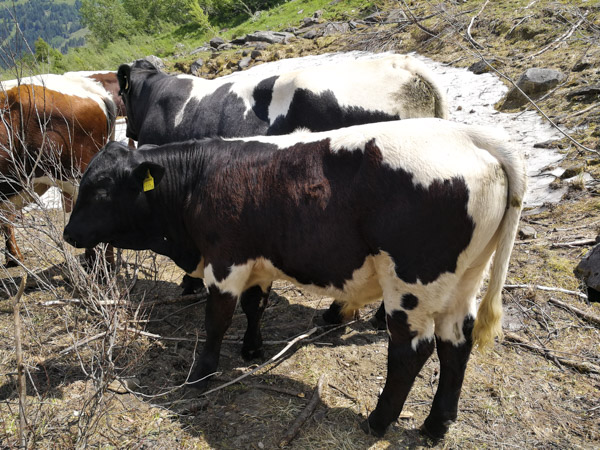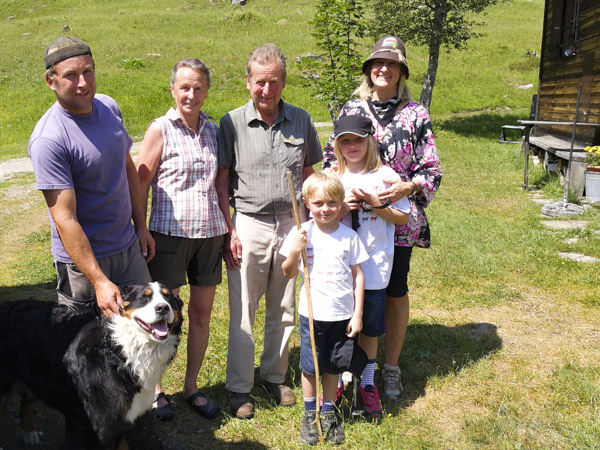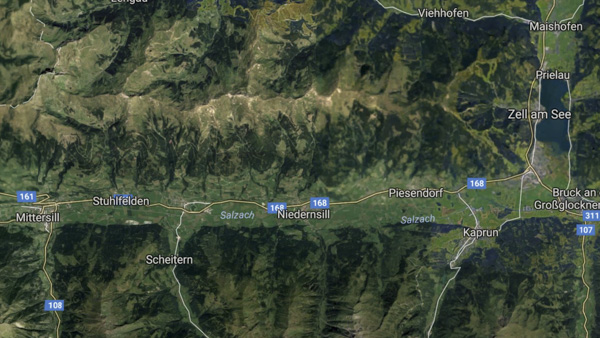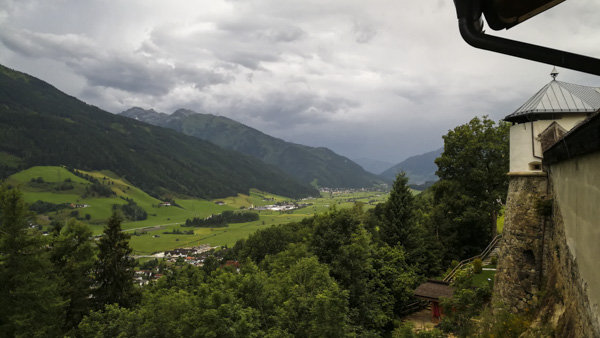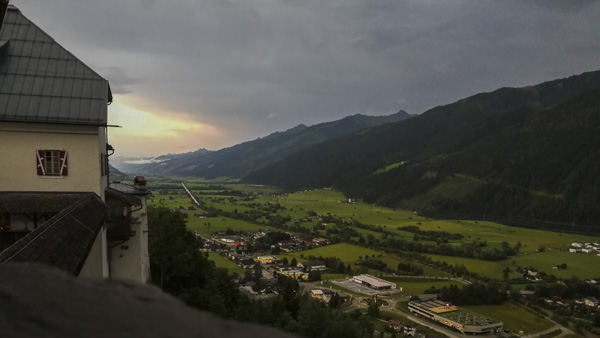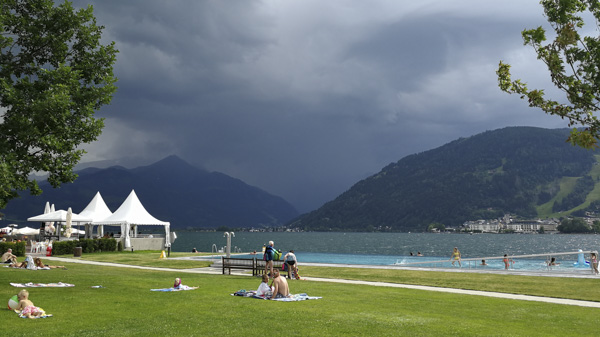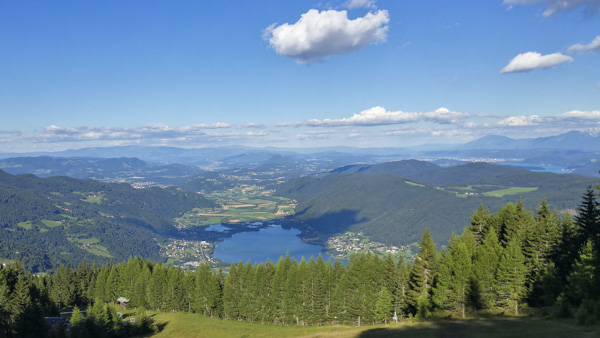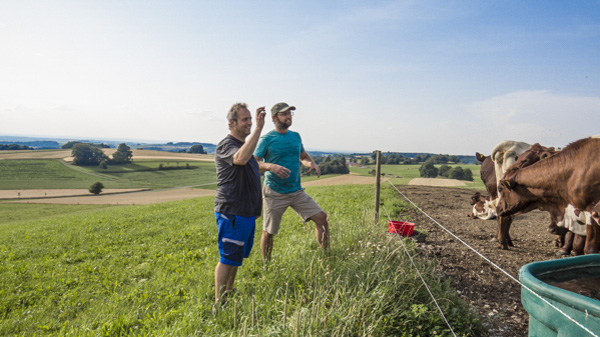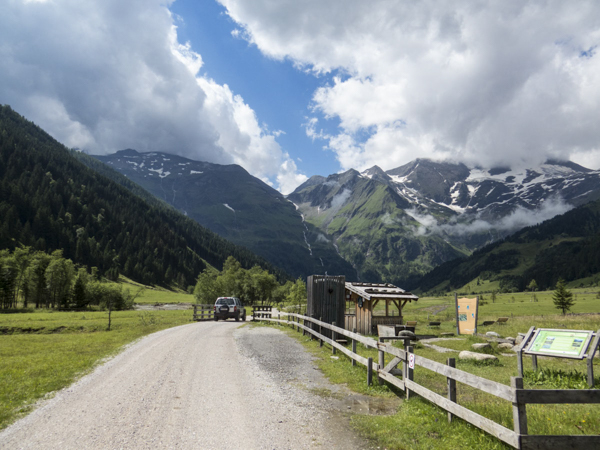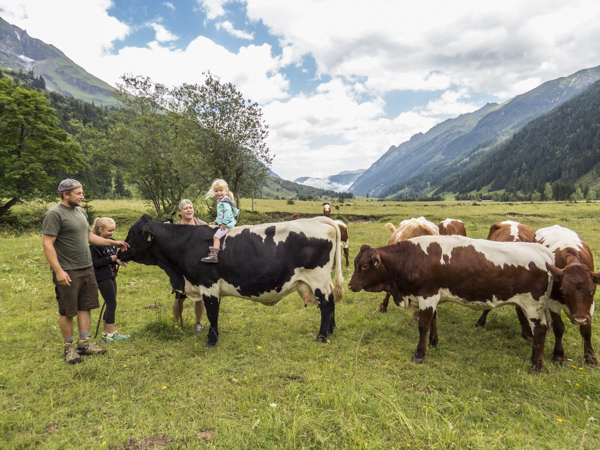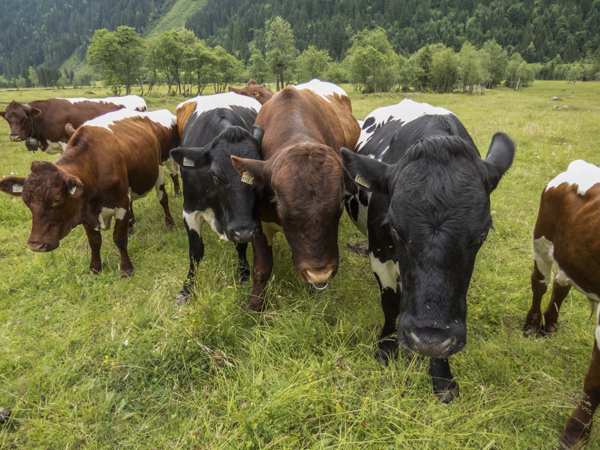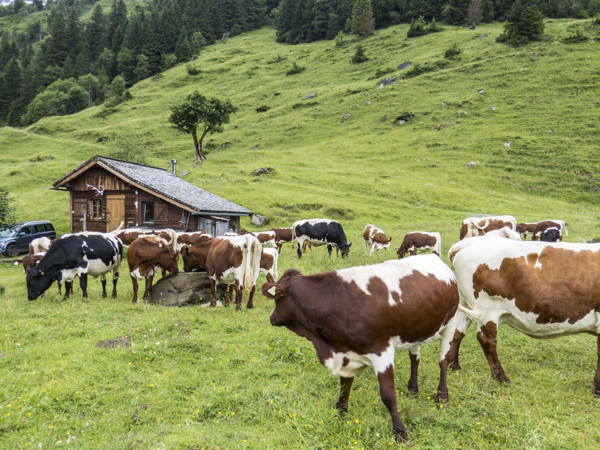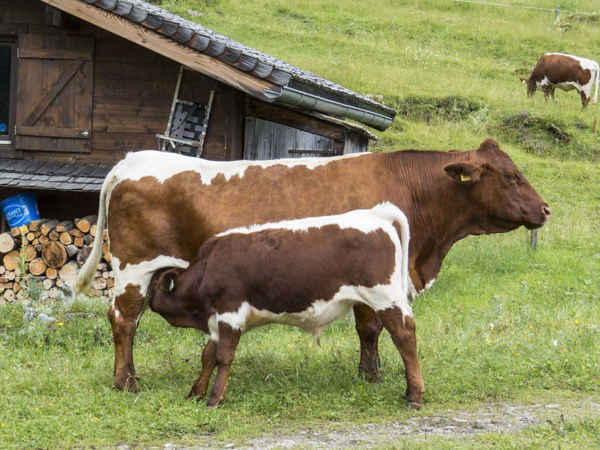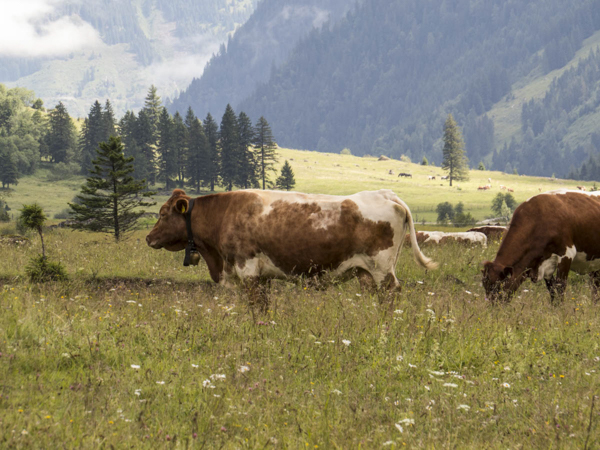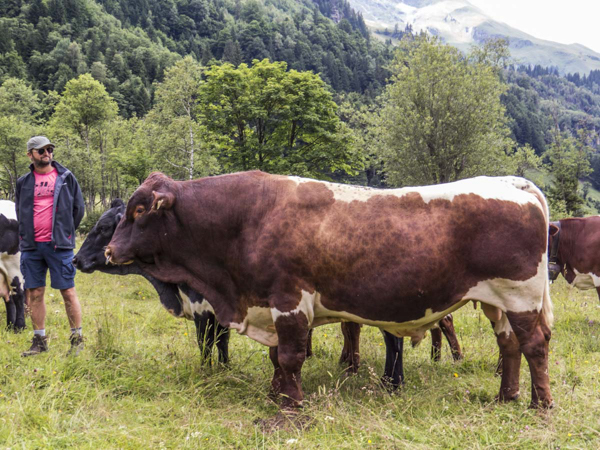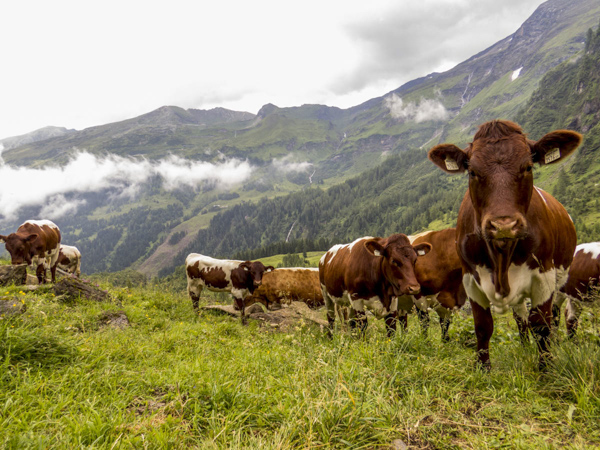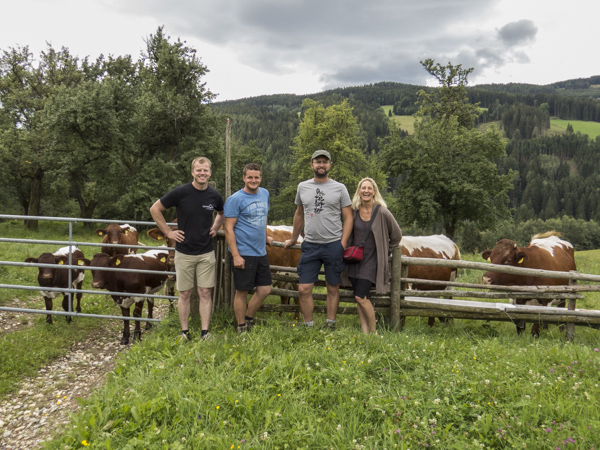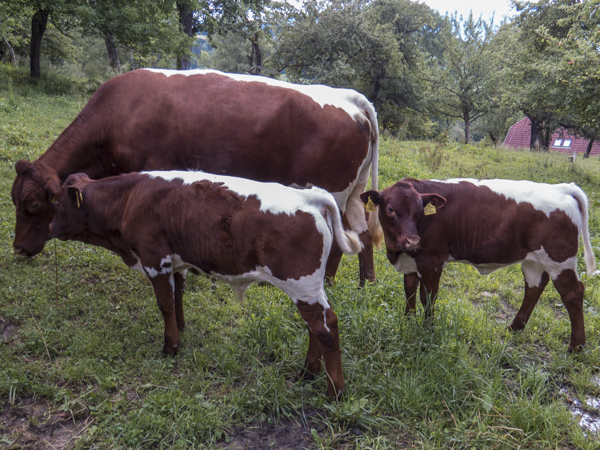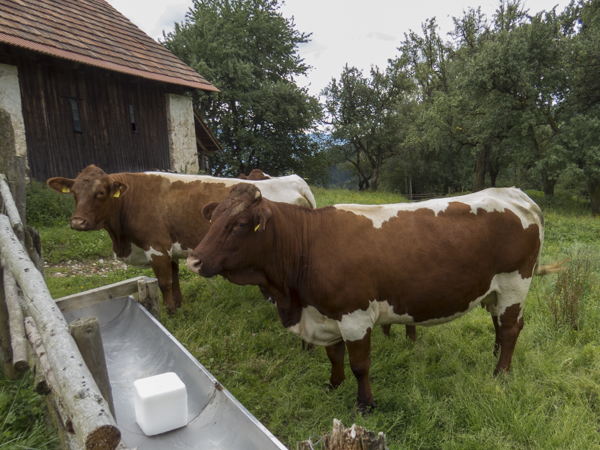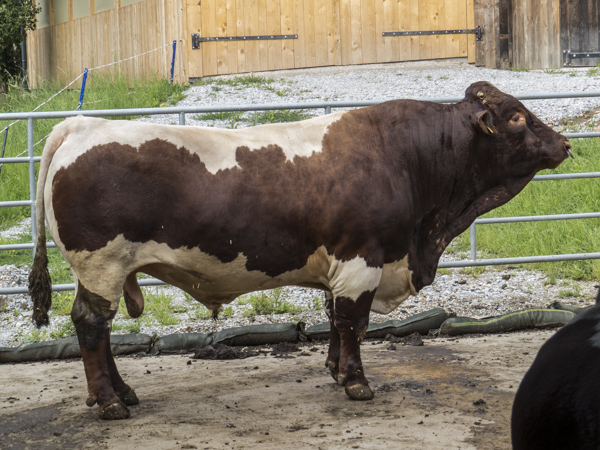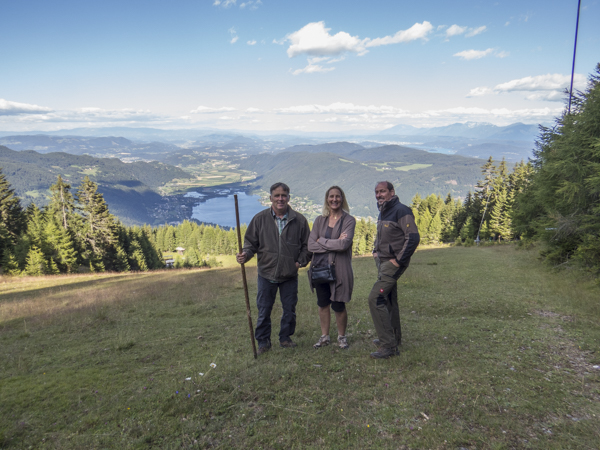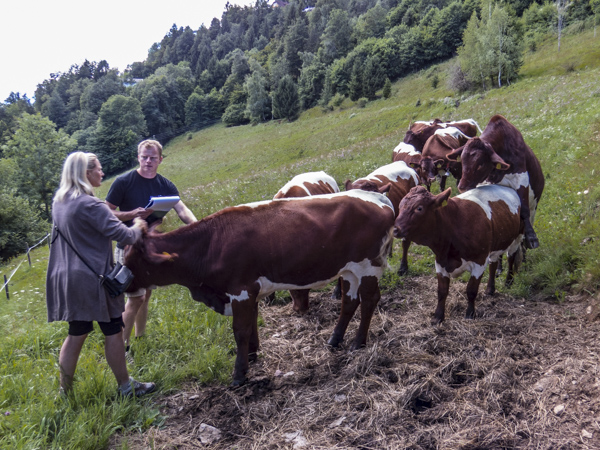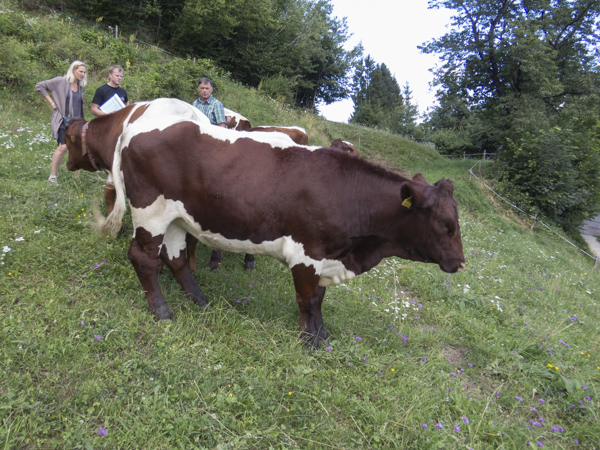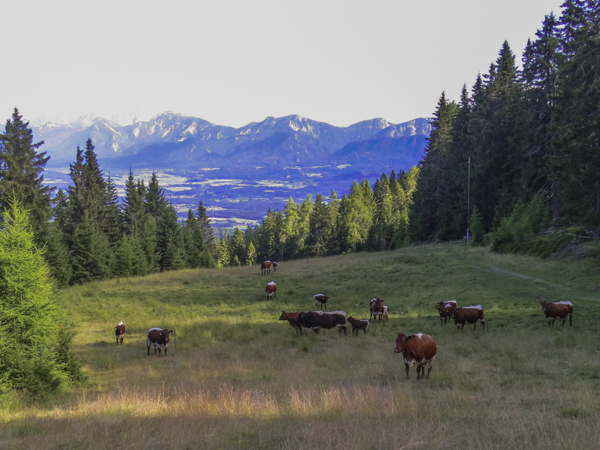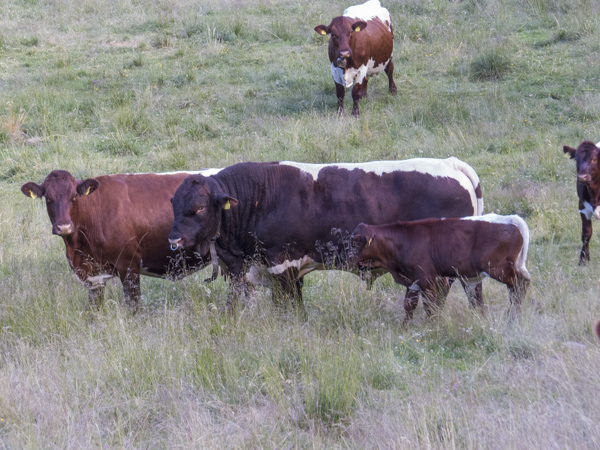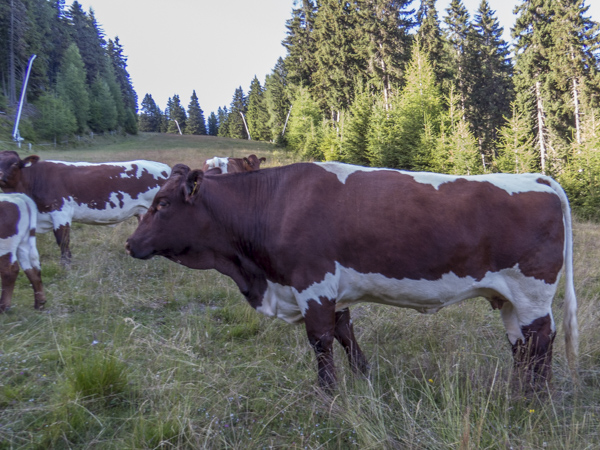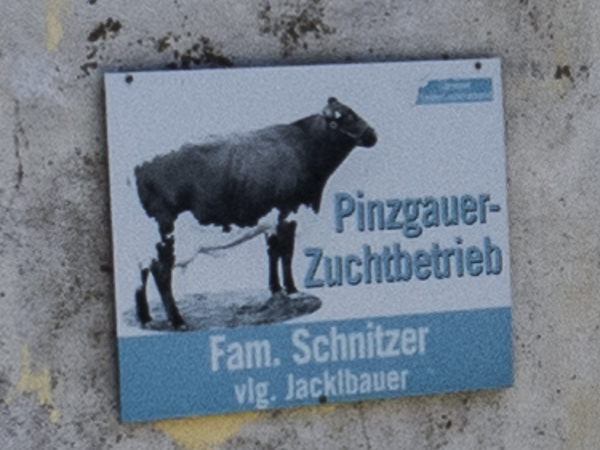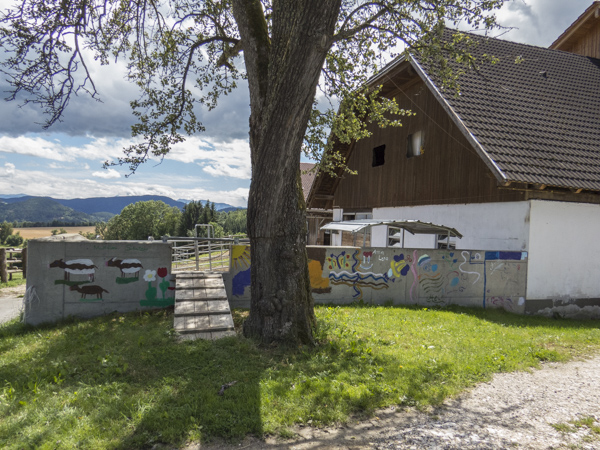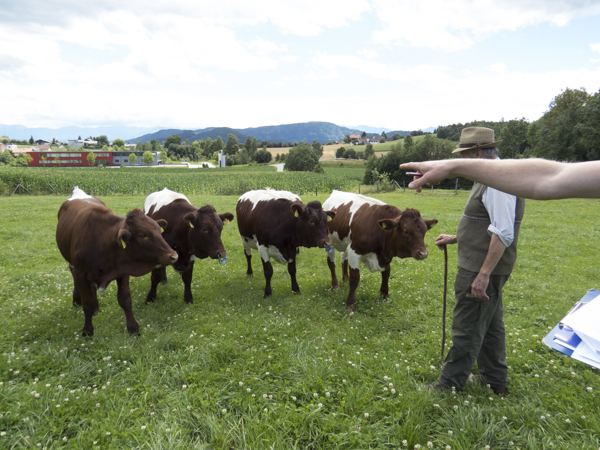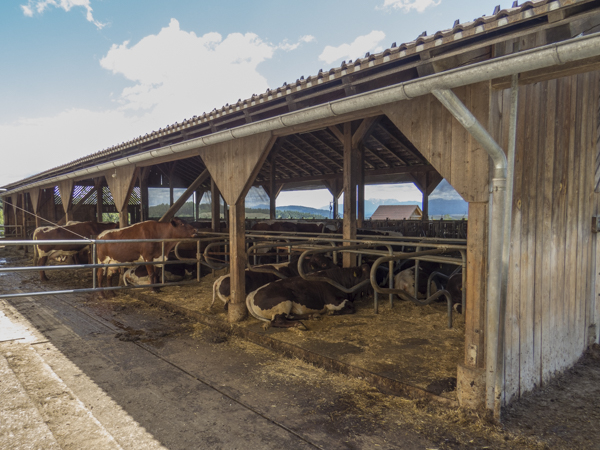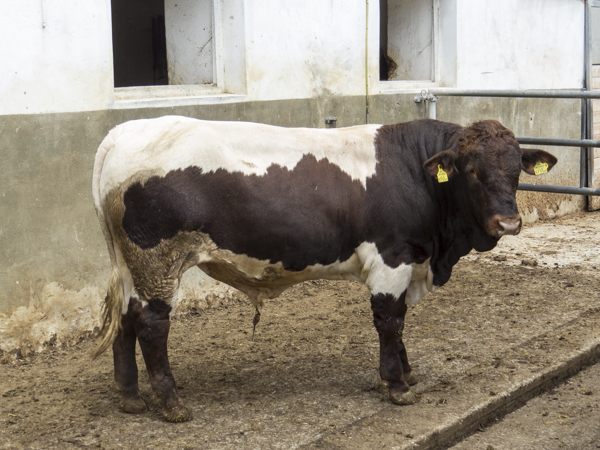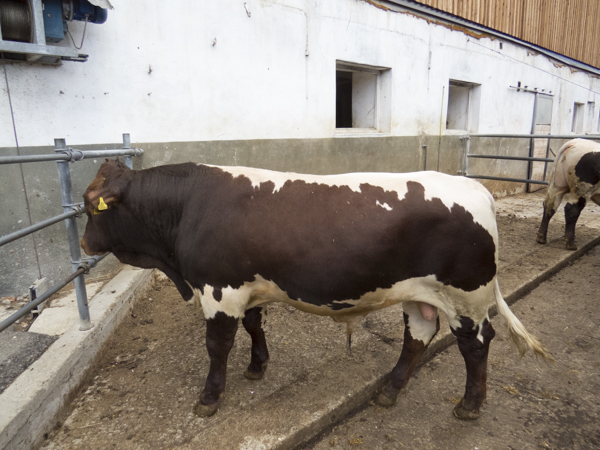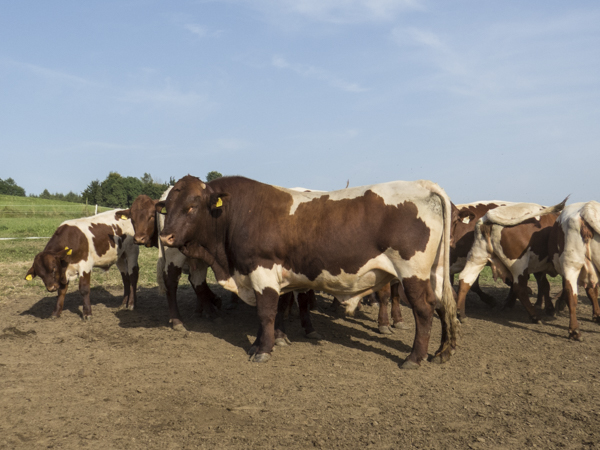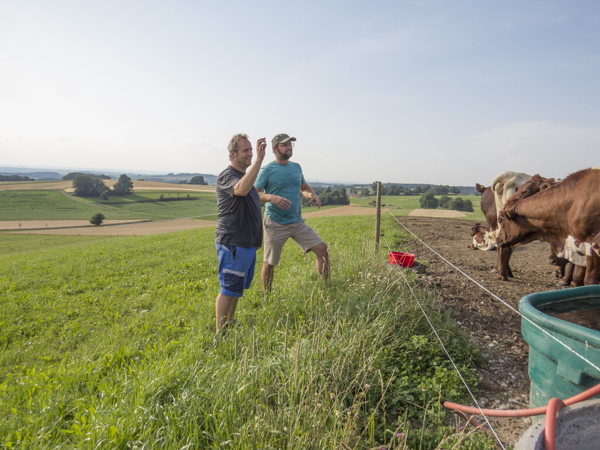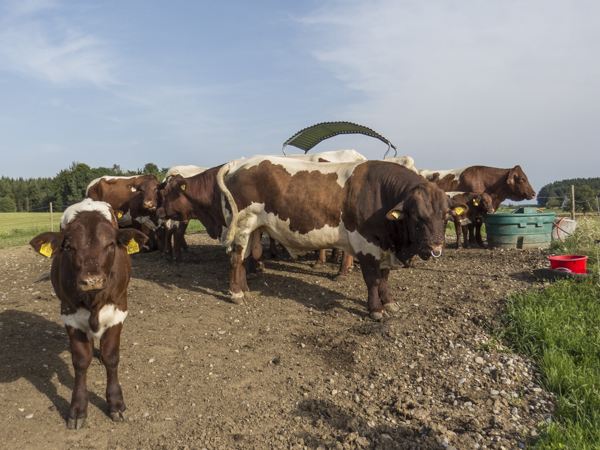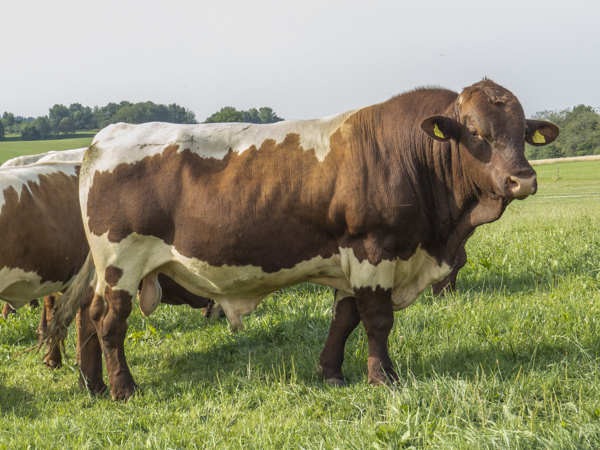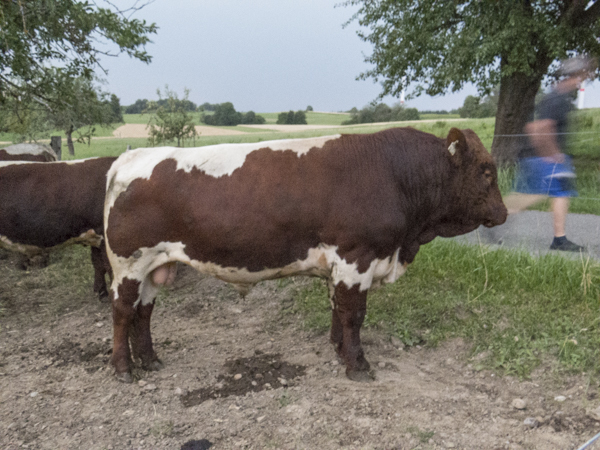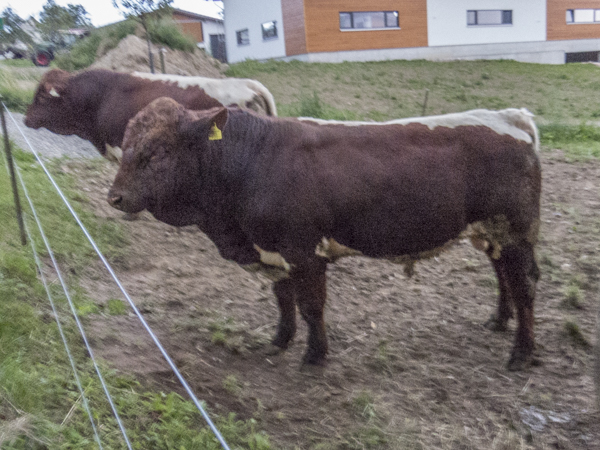Uses
The breed in Austria is still used as a dairy breed as much as a beef breed. The animals produce less yield than a Holstein based animal, but can cope with very tough alpine conditions on the alms. A preferred way to go seems to be to create a first Holstein cross for milking. The officials are milking animals at their farms, and shared some interesting observations with us, but we steered the discussion towards beef breeding after that as that is were the international focus for the breed lies.
Polled Origins
The breed was traditionally a horned breed, as horns were needed to be able to hitch up to when the animals were used as work animals. Apparently some 80 years ago a poll animal appeared somewhere in Tirol as a genetic mutation. There was only one farmer, the "Haller Wirt", who kept a line from this animal going, as he didn't care for horns. Eventually it was noticed that the breed should be moved towards more poll content, and sometime in the eighties the "Haller Wirt" could finally be persuaded to provide one of the animals to an AI station. There was a verbal agreement that in exchange all polled animals bred from that line would carry the prefix "Haller". This has been maintained in Salzburg until today - but not in Germany and Carinthia.
Polled Breeding
Since the last decade demand for polled animals has increased dramatically in Austria due to the trend towards converting most stables to 'Laufstaelle' - open stables where the animals can move around freely. In small spaces it is desirable to have no horns to reduce the risk of injury. However, polled genetics in Austria all trace back to one "Haller" animal, and so it is impossible to have completely polled herds for now. This will be a problem in Australia too, although we have been breeding some animals up from Angus and hence have some different poll genetics available to us. Breeding-up from another breed to introduce a desirable dominant gene is perhaps not what the traditionalist might like to see, but may have been a positive pragmatic move to ensure the future of the breed.
Colours
Whilst the breed is traditionally a red and white breed, black and white animals have been allowed in the main herdbook for a long time. Whilst they were said to 'bring good luck', they used to be seen as a bit 'hotter' in temperament, and weren't extensively bred, but are becoming a lot more popular now. Most farmers would have some black and white cows in their herd, but use red bulls over them.
Genepool
The breed is classed as a rare breed in Austria, with a correspondingly small gene pool - worldwide. Polled animals are becoming very sought after now, for both dairy and beef strains, but horned animals have to be kept in the herds to keep the genepool as broad as possible. Sharing of genetics on an international level would be very desirable, and any polled animals out of Australia would be of interest to the Austrians. They have already used an Australian Bull "Ravensbrook Caesar" in their breeding programs to obtain some different genetics, although he was horned. Many decades ago a stock of frozen semen of then very good animals was put aside, and recently permission has been given to some farmers to access that seed stock. Of course those are all horned animals, but it will nevertheless be very interesting to see what that youngstock will look like when it hits the ground next year.
Herdbook
The herdbook in Austria and Germany now follows the rules of the European Union, which stipulates that breeding-up programs are acceptable, with 4th generation cows and 5th generation bulls classed as purebreds. The herdbook, unlike ours, is not available online, neither in Austria nor Germany, apparently due to privacy legislation in those countries. Whilst a national database for Austria and Germany is in place, herdbook registrations are administered on a 'state' basis, i.e. each State in Austria and Germany has its own herdbook administrator and association to undertake breeding approval assessments. In Salzburg, for example, the responsible officer is Thomas Sendlhofer, and in Carinthia Georg Moser.
Performance
Performance Data recording in Austria takes place for both dairy and beef animals. For the latter it is mainly about weight gains, at birth, 200/365 days and slaughter weight. We were told that unfortunately the numbers of animals being slaughtered in official abattoirs that performance record is very small, hence the "EBV" type values for beef bulls are relatively unreliable.
Meat Quality
A scientific assessment of meat quality and tenderness has been undertaken for the International Pinzgauers Association, and this is available from their website (albeit in German). It says that the Pinzgauer exhibits very good tenderness in the meat. We can confirm anecdotally that the Pinzgauer steak we had in Kaprun was fabulous!
Economics
The economics of breeding these animals is rather different to Australia. Prices for animals and meat appear to be similar, for example, a good young bull might be worth about EU2,500. However, farmers are able to obtain fair levels of subsidies for different types of activities - supporting a rare breed is one of them and attracts an annual subsidy per animal kept. Landcare activities and organic farming are subsidised, and this is really essential for the upkeep of the Austrian landscape in its traditional form by the farmers that would otherwise not have the scale to be able to operate economically.
Joining
Generally heifers are joined at 15 months. Most breeders would join them twice in the spring, and then give them a six months break after the second calf by moving them from spring to autumn joining. Artifical Insemination is used but is perhaps seen as a little 'unnatural', and hence not as often employed. Hardly anyone works with embryo transfer, and this is partly due to the fact that the Austrian farms mostly hold 'organic' status - and under that system the treatments required for successful embryo transfer and to some extent even artifical insemination can not be implemented.


